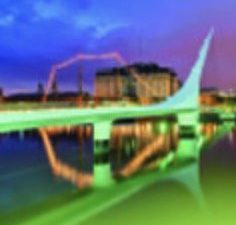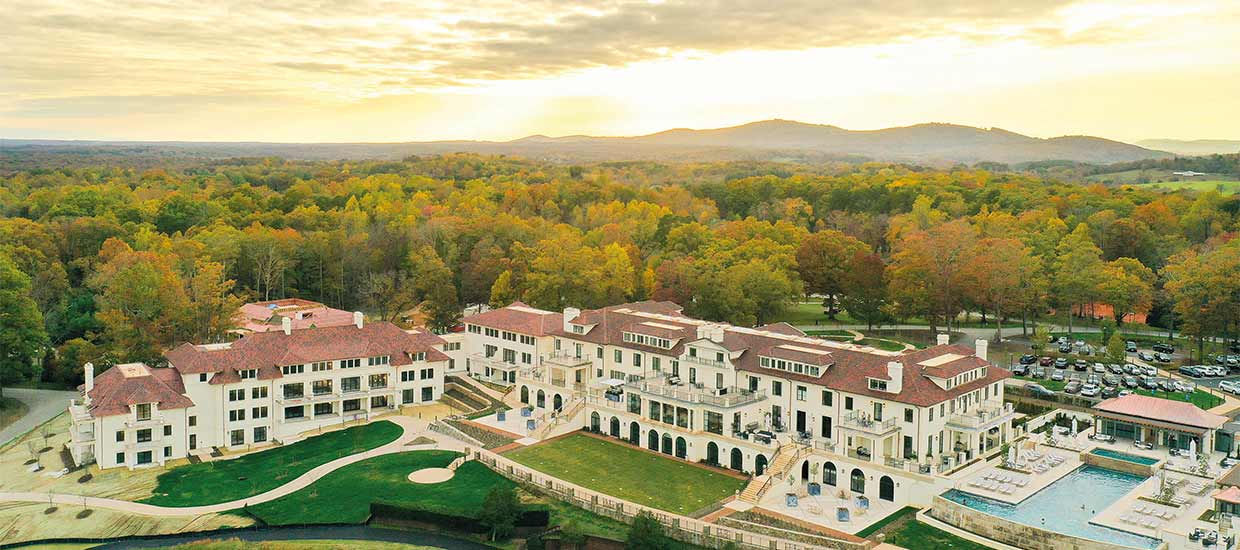City of fair winds
April 29, 2017


Argentina is a story brimming with both great achievement and great tragedy, a drama that stars a colorful cast of characters drawn from a lively world heritage. And its capital city, Buenos Aires, seems to distill all that in an intoxicating mix of European elan and Latin fire. The name in Spanish means literally ‘good airs,’ but for the 16th century explorers who originally settled Buenos Aires it was translated perhaps more romantically as ‘fair winds.’
Wedged between Argentina and Uruguay along the western banks of the Rio de la Plata, Buenos Aires offers wide, welcoming boulevards, a treasure trove of neoclassical architecture and a cultural verve that long ago earned it the title of “the Paris of South America.”
After Argentina declared its independence from Spain in 1816 and following decades of civil war, beginning in the 1860s the country enjoyed a long period of prosperity. Buenos Aires became its political and economic epicenter, attracting vast wealth from Argentina’s fertile agricultural heartland. By the 1880s, thanks to government policies that encouraged immigration, the country was a magnet for Europeans looking to settle here and with the dawn of the 20th century, Argentina had become the 7th richest nation in the world.
The impact of Argentina’s long-ago belle époque is still manifest today, both in Buenos Aires’ grand architecture, and even more profoundly, in the society’s rich cultural legacy. Porteños – as the residents of Buenos Aires are known – have a heritage drawn from Italian, Spanish, and other European cultures who flocked to Argentina during the period, a migration that virtually reshaped both its people and its economy.
But since those heady days, the country has fallen into a series of national missteps, including military dictatorships, devastating economic crises and charges of corruption. Mention Argentina and the first thing that may come to mind are recent news reports of former president Cristina Fernández de Kirchner, indicted for allegedly taking kickbacks.
As the wife of Nestor Kirchner, the former president, CFK – as she’s sometimes styled in the press – channels Argentina’s most celebrated female politician, Eva Peron who, though she never held elected office, was nonetheless enormously influential even after her death. Fans of Broadway will immediately conjure up images of the musical Evita with Eva and her husband, President Juan Peron, on the balcony of La Casa Rosada waving to the cheering throngs packed into the plaza below.
So Much to See
In fact, the Pink House is probably the best place for out-of-towners to start getting to know Buenos Aires. The building faces Plaza de Mayo, the heart of the city, which since 1810 has been the scene of every major political event in the country. In the center, the Piramide de Mayo memorializes Argentina’s independence revolution. Surrounding it in a perfect circle, white scarves are painted on the ground, testimony to the scarf-wearing mothers and grandmothers who march here every Thursday in remembrance of those who died or disappeared during the brutal military rule of 1976-83.
Other examples of Argentina’s historic architectural heritage dot the square including the Cabildo and the Metropolitan Cathedral. The latter is notable as the archdiocese of former Cardinal Jorge Mario Bergoglio – today Pope Francis. Indeed, the Pope has become big business in his home town. Visitors have a choice of several tours that show off Francis-related sites around the city. In addition to the cathedral, stops include Flores, where he grew up, and his former schools.
At the corner of the square, Avenida de Mayo heads westward offering a string of traditional cafés inspired by tango music, including Café Tortoni, one of the oldest in Buenos Aires and regularly visited by intellectuals and politicians. Just a few blocks away from Plaza de Mayo is Florida, the pedestrianized street lined with shopping arcades, offices, restaurants, tango dancers and street performers. It’s an essential stop for tourists and business travelers alike.
Gone, But Not Forgotten
A cab ride away is the leafy Recoleta neighborhood with large green areas where live artistic performances take place in the open air. This quarter hosts several of the city’s prominent cultural attractions such as the National Museum of Decorative Arts, the National Museum of Fine Arts and the Palais de Glace. On a more somber note, Recoleta is also the home of the cemetery of the same name, final resting place of the city’s elite for generations.
The tombs with their intricate designs crowd along a network of stone paths so it resembles a city in miniature more than a burial ground. It’s also the last stop for the aforementioned Evita, in the denouement of a bizarre tale worthy of the darkest gothic novel. Following her untimely death in 1952, Eva’s body was preserved on orders of her husband with the idea of building a huge mausoleum to put her earthly remains on display for public viewing.
However, before the memorial could be completed, Peron was overthrown and fled the country in 1955. The military junta that replaced him banned Peronism, forbidding any reference to the dictator or his wife. Evita’s body was spirited away in mysterious circumstances and remained unaccounted for until 1971, when it was revealed she had been buried in Italy under an alias. Her body was exhumed and brought to Spain, where the exiled Peron and his third wife Isabel reportedly kept it in their dining room.
Evita made one more public appearance in 1974, when Peron himself died. Isabel Peron, who had succeeded her husband as Argentina’s president, had his second wife’s body displayed beside his for a time before it was well and truly interred in Recoleta. Today she rests – finally – deep beneath a black granite gravestone which, in light of her nomadic life-after-death, is rather sedate by comparison.
Recoleta itself is an area of opulent homes typified by its grand Belle Epoque architecture of which the Algodon Mansion hotel, at 1647 Montevideo, is a great example. The 1912 white-fronted townhouse was restored in 2010 to become the city’s first Relais and Châteaux property. The glass-covered patio is a great spot for a glass of Argentine red.
Tango in the Streets
From Recoleta it’s a 20-minute walk north to one of the biggest green spaces in Buenos Aires, the Palermo district. The parks and lakes of Palermo have flora from across the country, and here too the city offers more quality attractions, including the imposing Galileo Galilei Planetarium which boasts its own hunk of moon rock brought back by Apollo XI.
The Museum of Latin American Art Buenos Aires presents films, art exhibitions and intriguing projects by local designers. Finally, the Japanese Garden combines cultural activities in the middle of a landscape with oriental flowers and trees, and a magnificent view of the lake from a panoramic bridge.
On the south side of the city lies San Telmo, one of the city’s oldest neighborhoods near the Plata River. The extravagant homes of Recoleta were built by wealthy porteños fleeing a yellow fever epidemic that plagued this low-lying area. Today San Telmo is an artsy enclave known for a Sunday afternoon market at Plaza Dorrego with hundreds of stalls selling antiques, leather goods, vintage gear and handmade accessories. The rest of the week, sidewalk cafes fan out from the plaza during the day, and late at night (some bars don’t even open until midnight) a bohemian crowd mingles with tourists.
Located next to the Riachuelo river south of the city center, La Boca is the most picturesque of Bueno Aires’ barrios with its lively colored houses of wood and corrugated metal. It is the city’s oldest neighborhood, located at the mouth of the first port of Buenos Aires, which gives it its name. The most famous street in La Boca is Caminito, where local painters, artisans and photographers showcase their work, and tourists watch tango dancers in the street, shop for souvenirs and dine in little restaurants.
From its glitzy glass and steel high-rises to colorful art-laden barrios, advanced technology startups to street-side tango sessions, Buenos Aires is a grand city in every sense, offering a wealth of opportunity. The city’s people have a diverse heritage drawn from all over the globe, and it’s home to a sophisticated world-spanning cuisine.
But despite all its glamour and cultural richness, Buenos Aires still labors under the weight of Argentina’s history – an unsettling backdrop of political intrigue and economic uncertainty that seems to color whatever progress with a tinge of skepticism.
Nevertheless through prosperity and adversity, this city’s limitless vivacity continually bubbles up, unfettered. On the streets of Buenos Aires, the mood is light, the wine flows freely, and the dancers tango long into the night.




